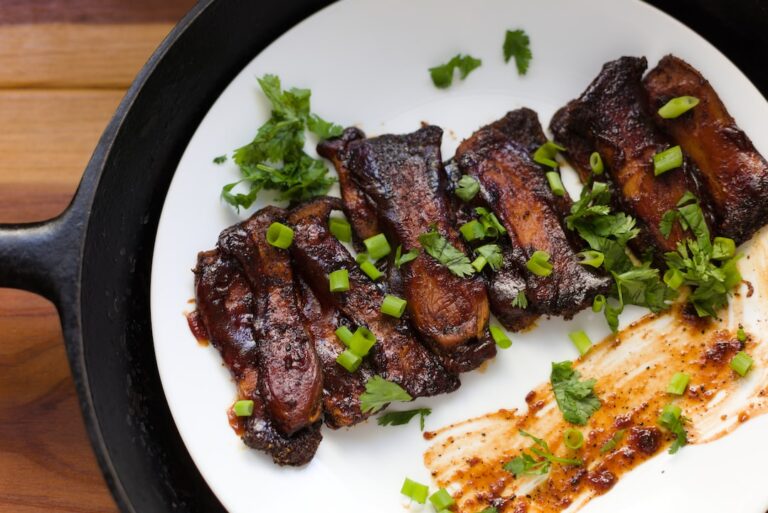Can You Freeze Cooked Grits? My Tips for Freezing Leftovers
Grits are a staple breakfast food in the South. With their creamy, porridge-like texture and slightly sweet corn flavor, grits make the perfect base for a hearty morning meal. I grew up eating cheese grits, shrimp and grits, grits with red-eye gravy – you name it!
Now that I live on my own, I find myself often cooking up a big batch of grits on Sunday to last me through the week. But by Wednesday or Thursday, I’m tired of grits again until next weekend.
This got me wondering – can you freeze cooked grits to enjoy later? Freezing leftovers would allow me to make a large pot just once a week but keep enjoying them for months.
After doing some research and my own experimenting, I discovered that yes, freezing cooked grits is completely possible! Properly storing and reheating frozen grits is key to maintaining that creamy, smooth texture we all love.
In this post, I’ll share my tips on the best way to freeze grits in convenient portions, avoid freezer burn and ice crystals, and reheat frozen grits so they taste freshly made. I’ll also include some of my favorite add-ins to jazz up frozen grits like cheese, bacon, and shrimp.
Let’s get into all the details on freezing cooked grits so you can enjoy this Southern staple for months!
Can You Freeze Cooked Grits?
The short answer is yes, you can absolutely freeze cooked grits for later use. Freezing is a great way to save time and avoid waste when you’ve made a large batch but don’t want to eat grits every day.
Frozen grits will keep for 2-3 months in an airtight container or freezer bag. Make sure to cool grits completely before freezing, package in appropriate portions, and remove as much air as possible from bags.
With the proper freezing and reheating methods, frozen grits retain their texture and flavor surprisingly well. I was amazed that frozen grits tasted nearly as good as fresh when I tried them!
Freezing allows me to always have a hearty breakfast side ready to go in my freezer. Then I can enjoy grits whenever the craving strikes by reheating frozen portions.
Tips for Freezing Cooked Grits
Here are my top tips for successfully freezing cooked grits to enjoy later:
Start with Quality Grits
Always start with quality grits, like stone-ground whole grain for the creamiest texture. Instant or quick grits don’t hold up as well when frozen. Standard stone-ground grits work best.
Let Grits Cool Completely
It’s crucial to let cooked grits cool fully at room temperature before freezing. Hot food will cause condensation in the freezer, leading to soggy grits when thawed. Spread grits in a thin layer on a sheet pan to speed cooling if needed.
Portion into Freezer-Safe Containers
I like to freeze grits in single serving portions using small freezer-safe containers or bags. This allows me to thaw just what I need each time. Avoid large batches or blocks of grits which are hard to reheat evenly.
Remove Air and Seal
Remove as much air as possible before sealing bags or containers of frozen grits. The less air, the better the grits will keep without freezer burn. I flatten bags to push out extra air, or use my food sealer for a tight seal.
Label Properly
Always label any food going in the freezer with the contents and freeze date. Trust me, unlabeled frozen blobs quickly become a mystery! Make sure to use frozen grits within 2-3 months for best quality.
Thawing and Reheating Frozen Grits
Thawing and reheating are important steps for frozen grits to retain a smooth, creamy texture. Here are my methods:
Thaw Overnight in Fridge
For best results, thaw frozen grits overnight in the refrigerator. This prevents any moisture loss. If short on time, defrost in the microwave in short bursts, stirring between.
Reheat on Stovetop
Reheating grits on the stovetop allows me to add extra liquid to retain the right consistency. I like to heat them up in a saucepan with milk, broth, or water over medium heat while stirring frequently.
Use the Microwave
You can also reheat frozen grits in the microwave but keep a close eye to prevent overcooking. Heat them in 30 second bursts, stirring in between until heated through. Add extra milk or broth if needed.
Stir Frequently
No matter which reheating method you use, be sure to stir grits frequently as they reheat. This helps maintain a smooth, creamy texture without clumping.
Add Ins Once Heated Through
I like to mix in cheesy or other add-ins after the grits are fully heated through. This prevents the extras like cheese or shrimp from getting overcooked or rubbery.
Avoid Common Freezing Mistakes
While freezing grits is simple, there are a few mistakes to avoid:
- Don’t freeze grits in one large block. Reheating will be uneven.
- Allow grits to fully cool before freezing. Hot food leads to excess freezer moisture.
- Prevent ice crystals by freezing grits quickly in thin layers, not big batches.
- Don’t overcook grits when reheating or they will become mushy.
Following my tips of proper portioning, sealing, and reheating will give you the best results with frozen grits!
Favorite Ways to Use Frozen Grits
Once my frozen batches of grits are thawed and reheated, here are some of my favorite ways to serve them:
- Mix in shredded cheddar, Monterey Jack, or crumbled bacon for cheesy bacon grits.
- Top with sautéed shrimp, tomatoes, and Cajun seasoning for quick shrimp and grits.
- Stir in maple syrup and toasted pecans for a twist on sweet grits.
- Ladle red-eye gravy over heated grits for a taste of the South.
- Swirl in pesto or sun-dried tomatoes for rich herby flavor.
The possibilities are endless! Freezing gives me homemade grits whenever I want them.
Enjoy the Convenience of Frozen Grits
As you can see, freezing cooked grits is an easy way to save time while avoiding waste and enjoying grits for months. Proper cooling, portioning, and storage will give you deliciously creamy grits on demand.
I hope my tips on successfully freezing and reheating grits have inspired you to give it a try. Let me know your favorite add-ins for frozen grits in the comments!
Freezing allows this Southern breakfast staple to be appreciated any time of year. With a batch of frozen grits in the freezer, you’ll be ready to start your day right with a hearty bowl of creamy comfort.






